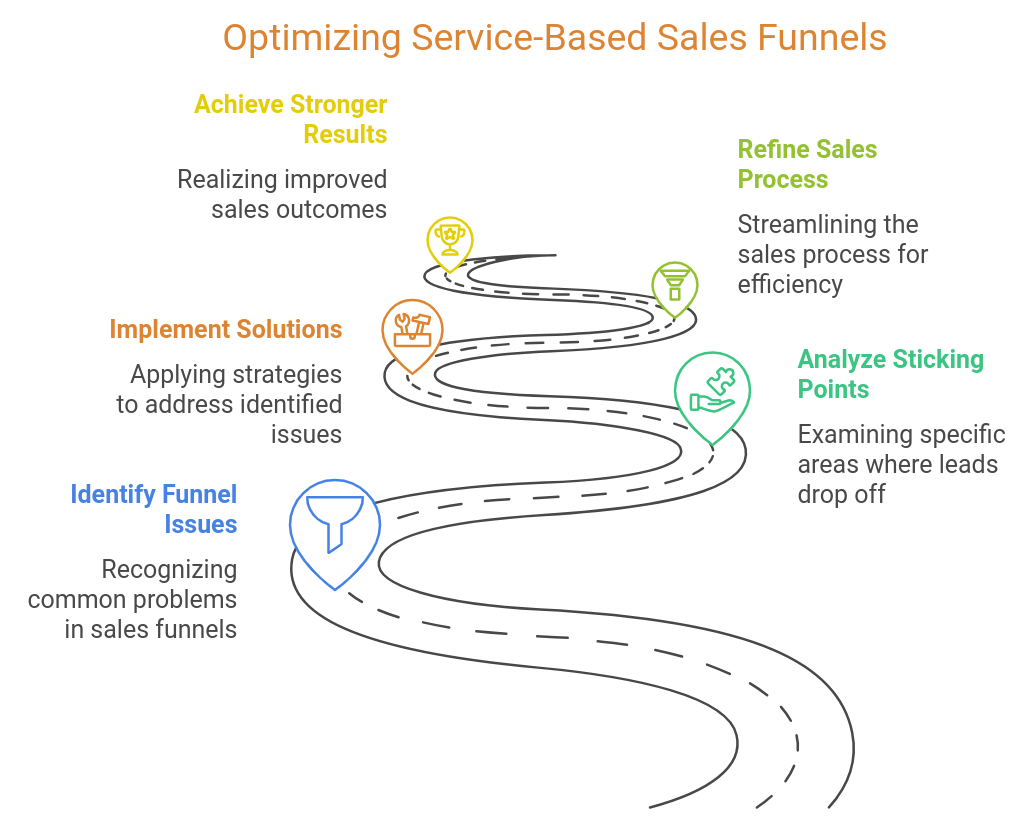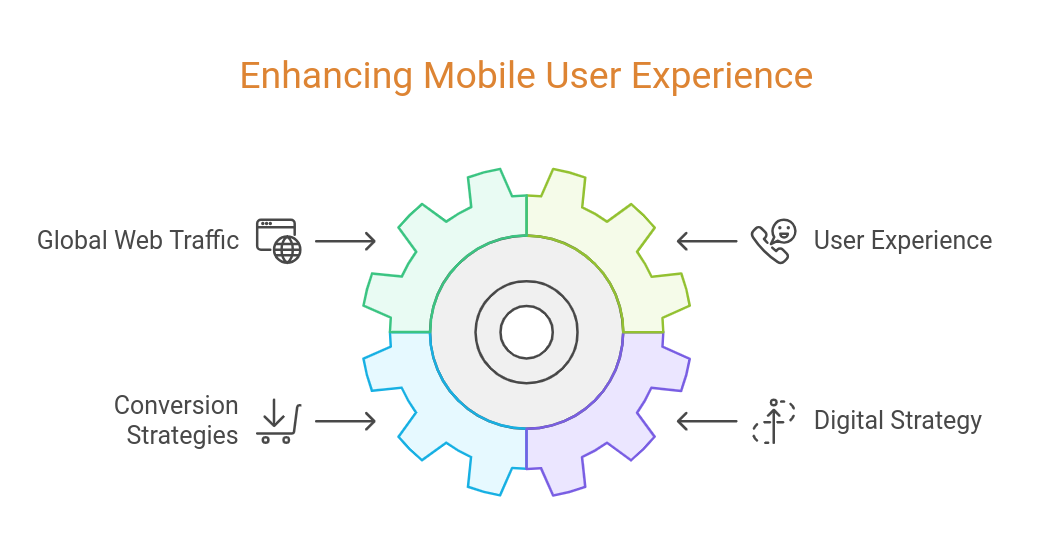How to Fix Common Sticking Points in Your Business’s Sales Funnel
Ever feel like your potential customers are getting stuck somewhere along the way? You’re not alone! Many small business owners struggle with converting interest into actual sales. Building an effective sales funnel that leads potential clients smoothly from discovery to decision can feel like an art form.
In this post, we’ll cover common sticking points in typical sales funnels and, more importantly, how to fix them. Taking the time to polish up your funnel means more conversions, happier customers, and, of course, more revenue for your business. Let’s dive in!
Defining and Understanding Your Target Audience
You’ve probably heard, “know your audience” before. Yeah, it’s cliché—but there’s a reason for that. Most sales funnels hit a snag early on because they’re trying to appeal to everybody…which means they’re speaking to nobody. A **poorly defined target audience** can leave you marketing in the dark.
Tell Your Target to Move In
If you only take one tip from this section, let it be this: **focus on a specific audience**. Define who your ideal customer is, and I mean down to what they had for breakfast this morning (okay, maybe not quite *that* detailed, but you get the point). You need to understand their problems, desires, and goals. Tailoring your messaging to those needs will *make them feel like your business gets them*, and that builds trust.
Practical Tips for nailing Audience Definition
- **Customer Surveys:** Ask your existing customers what challenges brought them to your business.
- **Market Research:** Dive into forums, social media groups, and comment sections to eavesdrop on what your target audience is talking about.
- **Create Customer Personas:** Imagine your ideal customer and describe their job, family life, pain points, and goals. Then, market *directly* to that person!
Bonus: Check out this fantastic resource on crafting **customer personas** (HubSpot Persona Tool)
Effective Lead Nurturing
So, you’ve cast your net and caught some leads. Now what? You can’t just let them swim around aimlessly—that’s how you lose them. **Lead nurturing** is all about gently guiding someone through your sales funnel until they’re ready to commit. And trust me, you want to keep those leads warm, not ghosting you mid-conversation like a flaky Tinder date.
Pro Tip from the Field
According to **Ann Handley**, marketing expert and author, the trick to great lead nurturing is **personalization**. Don’t just spam folks with generic emails. Instead, use data to send customized follow-ups. A well-crafted, timely email can be the nudge your prospect needs to keep moving forward.
For example, try something like, “Hey [First Name], I saw you downloaded our free guide on baking *the perfect pretzel*! I’m curious, are you facing any challenges with your dough?” You’re opening the door to a conversation rather than poking them with a “BUY NOW” stick.
Need some help keeping track of all these leads? Tools like **CRM software** (Salesforce) can help automate and personalize those follow-ups.
Generating Awareness and Interest
You can have the best product on the planet, but if nobody knows you exist, it’s all for nothing. **Generating awareness** is like putting up a lit “open for business” sign. But, here’s the catch: it’s also about generating *interest*. You want people curious—thinking, “What’s this business all about?”
Step-by-Step Guide for Awareness and Interest
- Be everywhere your customers are. This could mean **social media**, **content marketing**, or **pay-per-click (PPC) ads**.
- Create content that educates, entertains, or inspires. This positions your brand as an **industry leader**.
- Engage. Post polls, ask questions, share behind-the-scenes moments—let people in on the human side of your business!
As **Seth Godin** says, **standing out** doesn’t mean being louder; it means being meaningful. Be bold with *what* you’re saying, not just how loudly you’re saying it.
Need some content inspiration? Check out this **blog ideas generator** (Portent’s Title Generator).
Consideration and Evaluation
This is where your potential customer is thinking, “Hmm, should I really go with these guys? Or that *other* guy?”
Put Their Mind At Ease
At this stage, people will be comparing your service with others. They need quality information to help them **reach a decision**, and this is where **case studies**, **testimonials**, and **detailed product descriptions** come in handy.
Case in point: Imagine someone comparing two web design agencies. Agency A shares a vibrant, helpful case study that showcases their *client’s* return on investment, while Agency B just says, “We make websites.” Which one do you think will seem more confident and trustworthy?
Show Your Cards
Be transparent with potential clients. Provide **pricing details**, **free consultations**, and even a **money-back guarantee** if you can swing it. When people don’t know what they’re buying, they hesitate. You’re looking to clear those doubts before they even have time to fester.
And hey, if you can deliver a little **social proof**—like that testimonial from Mrs. Smith who went from hating her website to loving it thanks to your team—you’ll tip the scales in your favor.
Conversion and Purchase Stage
Smooth as butter—or it should be. When converting, the *worst* thing you can do is complicate the process. It’s like jumping through hoops to book a hotel room—by hoop seven, you’re ready to camp.
Make Checkout Simple
A seamless checkout process is key. If you’re a service-based business, make sure your **payment options**, **scheduling**, and **communication** are easy to navigate. People shouldn’t need a GPS app to figure out how to hire you.
Here’s a telling stat from **Baymard Institute**: Nearly 70% of online shopping carts are abandoned (*ouch*) due to complicated checkouts. But don’t panic; this is easily avoided with clear, intuitive steps that guide the buyer smoothly to the final click.
Post-Purchase: Building Retention with Feedback
According to **Gartner Research**, it costs about five times more to gain a new customer than it does to keep an existing one. So, once you’ve made the sale, **don’t drop the ball**. Building a long-term relationship is way more profitable!
The Power of Feedback
Customer feedback is like a chef’s tasting spoon—it lets you spot areas of improvement (or celebrate fantastic work). **Ask for feedback** after every purchase or project. Incorporate any valuable suggestions into your process and let clients know they’re being heard.
This tends to boost customer loyalty—they’ll be more likely to **refer friends** and come back for more. And since you’ve already pulled them through the funnel once, that next conversion will be a breeze.
Bringing it All Together
Sales funnels have a lot of moving parts, but when they’re optimized, it’s like setting up a well-oiled machine that attracts, nurtures, and converts leads effortlessly. For small business owners, addressing **common sticking points** like audience definition, lead nurturing, and checkout simplicity can make all the difference in revenue and client satisfaction.
Whether you’re tweaking one part of the funnel or overhauling the entire system, the strategies in this post are designed to make your sales journey smoother for everyone involved. So, what are you waiting for? Get out there, audit your funnel, and watch those conversions climb!
Call to action: If you’re ready to iron out your sales funnel, start with a detailed look at your audience. Need help? Drop us a line, and let’s brainstorm ways to customize your funnel to your business’s unique needs!
—
Meta description: Is your business’s sales funnel getting stuck? Optimize each stage with these actionable tips to convert leads into loyal customers. Get started today!



